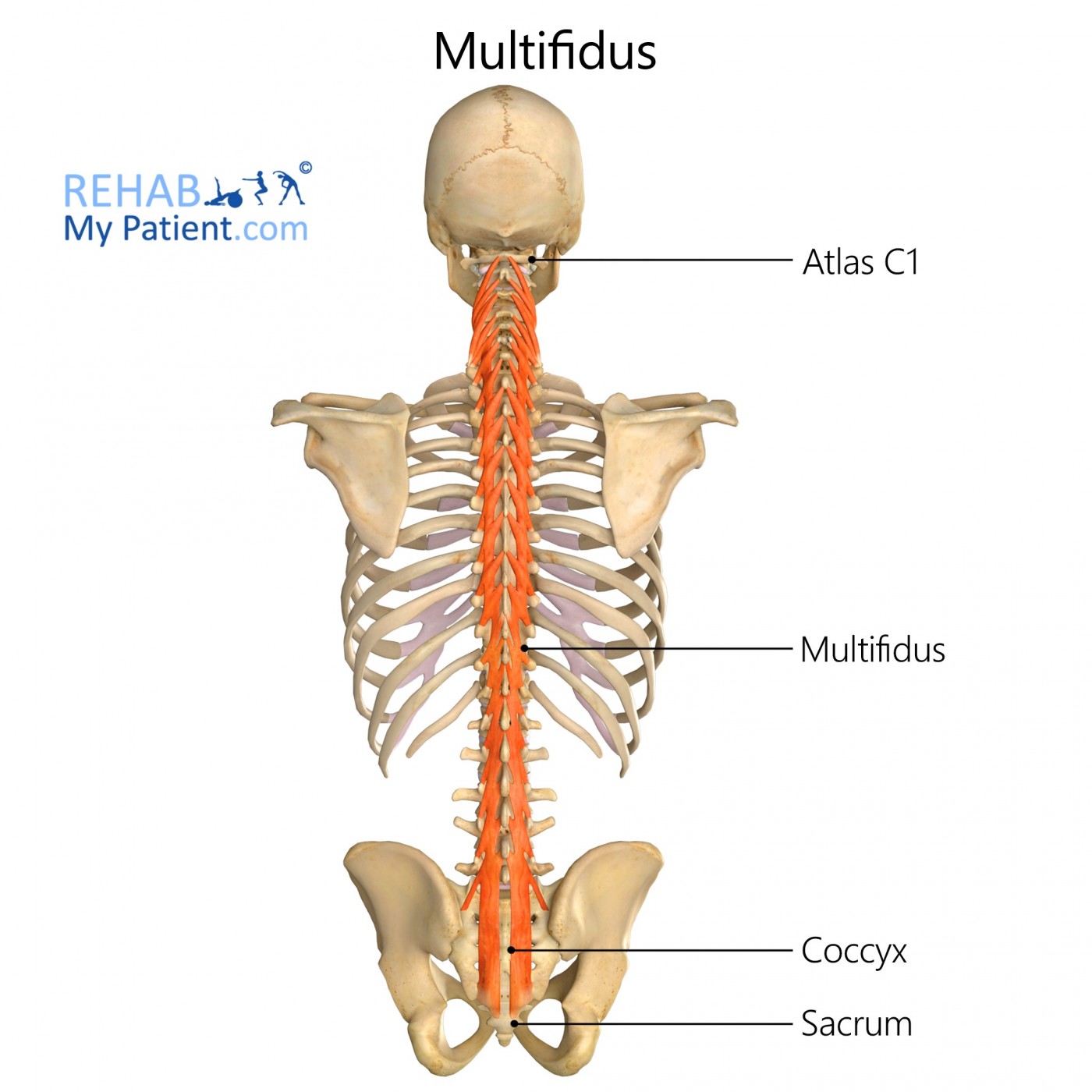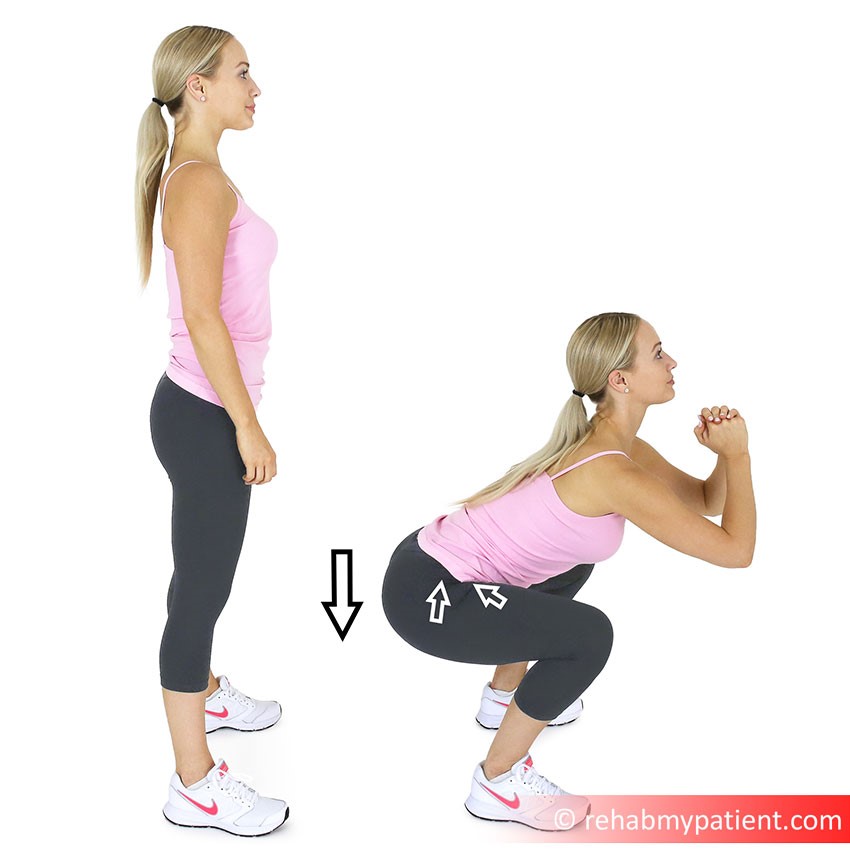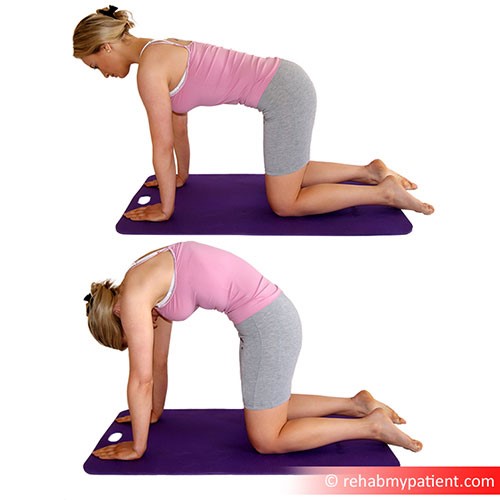
General information
Multifidus is the muscle running the length of the spine that allows for rotation, extension, and lateral movement.
Literal meaning
Split into many parts.
Interesting information
Multifidus is composed of several regions of muscles that begin at the sacrum, running the length of the spine, and ending at the base of the skull.
Injury to the multifidus muscle contributes to the lower back pain that many individuals experience. These muscles are responsible for the stabilisation of the spine. When destabilisation occurs, back injury may soon follow. Poor physical fitness, muscle fatigue, and prolonged extension of the muscle are the type of culprits that can trigger destabilisation. Exercises targeting the multifidus muscle will help to strengthen it, while NSAIDs, such as ibuprofen, will reduce inflammation and pain. If lower back pain persists, it may be necessary to visit a chiropractor to resolve the issue.
Origin
Sacrum, transverse processes of C3-L5.
Insertion
Spinous processes 2-4 vertebral levels superior to their origin.
Function
Extension of the trunk and neck.
Lateral movement of the trunk and neck.
Rotation of spine from side to side.
Nerve supply
Dorsal primary rami of spinal nerves C1-L5.
Blood supply
Deep cervical artery.
Posterior intercostal accessory artery.
Subcostal accessory artery.
Lumbar accessory artery.

Relevant research
Common practices for rehabilitation of chronic lower back pain include strengthening of the multifidus muscles and the transverse abdominis (TrA) in combination with each other. This study corroborates that rehabilitation of both muscles to aid with chronic back pain. These muscles require assistance from each other to function properly in the prevention of lower back pain. The strengthening of one without the other will not solve the problem.
Hides, J, Stanton, W, Mendis, D, Sexton, M. (2011). “The relationship of transversus abdominis and lumbar multifidus clinical muscle tests in patients with chronic low back pain”. Manual Therapy. 16:6, 573-577.
Clinicians often propose special exercises and stretches to aid with low back pain (LBP). Though there are several exercises that may be utilised, it is questionable which ones really help with LBP. Superficial fibres (SM) of the lumbar multifidus rotate the spine while deep fibres (DM) of the lumbar multifidus aid in stabilising the spine. This study shows that exercises targeting the DM may reduce the recurrence of LBP.
MacDonald, D, Moseley, G, Hodges, P. (2006). “The lumbar multifidus: Does the evidence support clinical beliefs?”. Manual Therapy. 11:4, 254-263.
Multifidus exercises

Deep squats
Begin with legs spread apart. Squat down as far as possible, making sure to keep the weight in the heels. It is important to keep the head up and looking forward. At the bottom of the squat, hold the position for five seconds. Do three sets of ten repetitions three times a week.

The Cat-Cow Pose
Begin the pose with hands and knees on the floor, with the hands directly under shoulders and knees directly under hips. Start with the spine in a neutral position and inhale. Upon exhale, look downward and round the spine up toward the ceiling. Hold this position for ten seconds. Inhale and arch the back downward by lifting the head and the tailbone upward and hold the position for ten seconds. Repeat this pose ten times a day.
Sign Up
Sign up for your free trial now!
Get started with Rehab My Patient today and revolutionize your exercise prescription process for effective rehabilitation.
Start Your 14-Day Free Trial